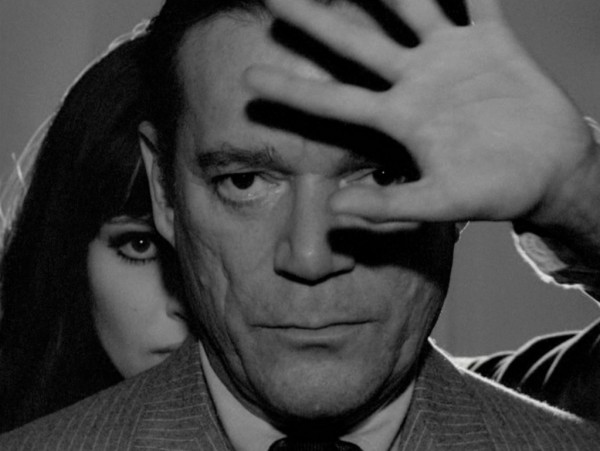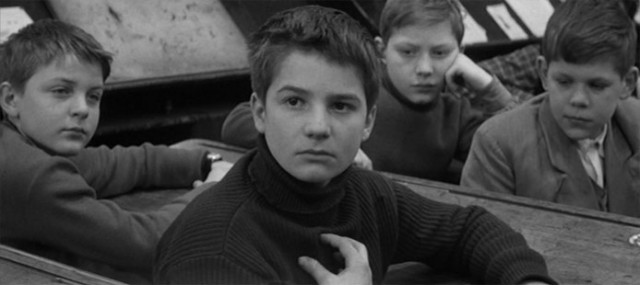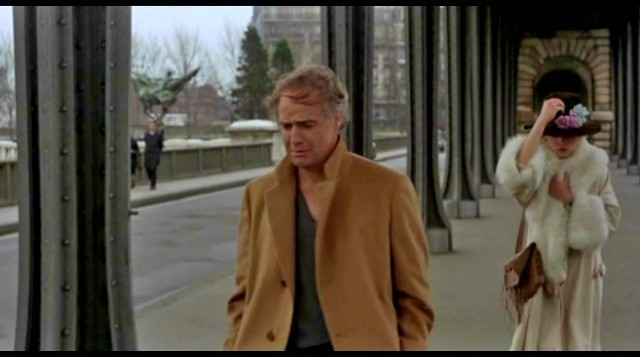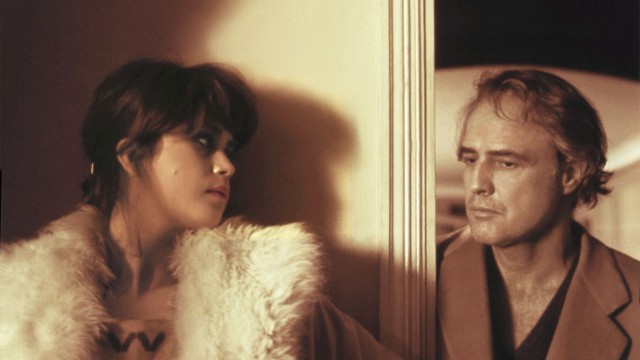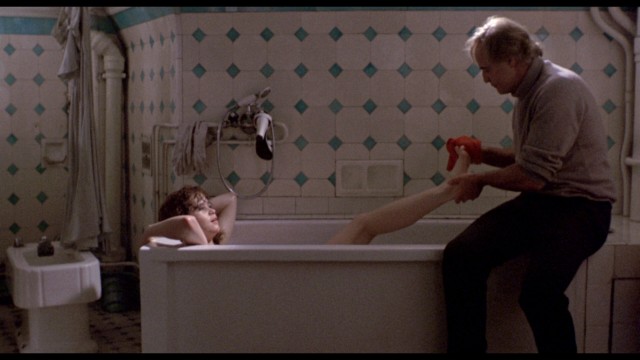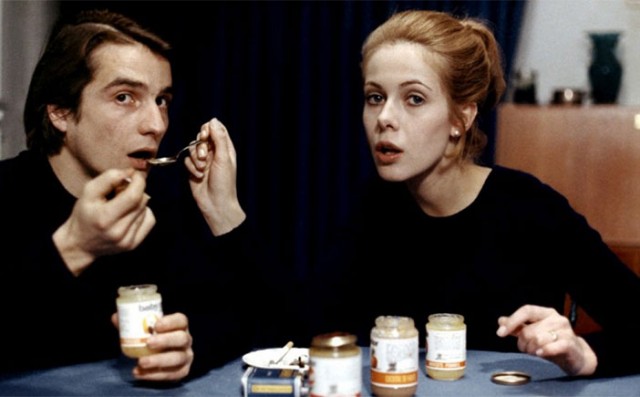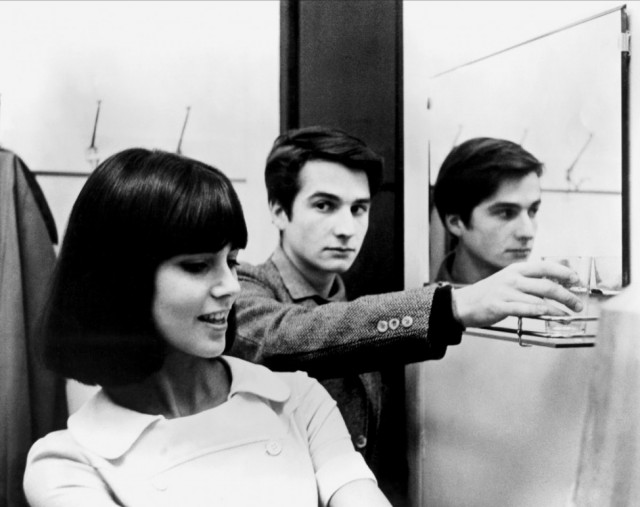
Paul (Jean-Pierre Léaud) has his eyes on the prize in Godard’s MASCULIN FÉMININ
MASCULIN FÉMININ (Jean-Luc Godard, 1966)
BAMcinématek, BAM Rose Cinemas
30 Lafayette Ave. between Ashland Pl. & St. Felix St.
Friday, May 6, 2:00 & 7:00
Series runs May 4-17
718-636-4100
www.bam.org
 In a 1966 interview with Pierre Daix about Masculin feminin, director Jean-Luc Godard said, “When I made this film, I didn’t have the least idea of what I wanted.” Initially to be based on the Guy de Maupassant short stories “The Signal” and “Paul’s Mistress,” the film ended up being a revolutionary examination of the emerging youth culture in France, which Godard identifies as “the children of Marx and Coca-Cola.” Godard threw away the script and worked on the fly to make the film, which stars Jean-Pierre Léaud as Paul, a peculiar young man who quickly becomes obsessed with budding pop star Madeleine, played by real-life Yé-yé singer Chantal Goya. (Godard discovered her on a television variety show.) Paul chases Madeleine, getting a job at the same company, going to the movies and nightclubs with her and her friends, and meeting her in cafés, where he wants to talk about the troubles of contemporary society and she just wants to have a good time. “Man’s conscience doesn’t determine his existence. His social being determines his conscience,” Paul proclaims. He continually argues that there is nothing going on even as strange events occur around him to which he is completely oblivious, including a lover’s spat in which a woman guns down a man in broad daylight. (Sounds of rapid-fire bullets can be heard over the intertitles for each of the film’s fifteen faits précis, evoking a sense of impending doom.) Paul has bizarre conversations with his best friend, Robert (Michel Debord), a radical who asks him to help put up anarchist posters. Posing as a journalist, Paul brutally interviews Miss 19 (Elsa Leroy), a young model with a very different view of society and politics. Godard has also included a playful battle of the sexes in the center of it all: Paul wants Madeleine, much to the consternation of Madeleine’s roommate, Elisabeth (Marlène Jobert), who also has designs on her; meanwhile, Robert goes out with another of Madeleine’s friends, the more grounded Catherine (Catherine-Isabelle Duport), who is interested in Paul. It all makes for great fun, taking place in a surreal black-and-white world dominated by rampant consumerism.
In a 1966 interview with Pierre Daix about Masculin feminin, director Jean-Luc Godard said, “When I made this film, I didn’t have the least idea of what I wanted.” Initially to be based on the Guy de Maupassant short stories “The Signal” and “Paul’s Mistress,” the film ended up being a revolutionary examination of the emerging youth culture in France, which Godard identifies as “the children of Marx and Coca-Cola.” Godard threw away the script and worked on the fly to make the film, which stars Jean-Pierre Léaud as Paul, a peculiar young man who quickly becomes obsessed with budding pop star Madeleine, played by real-life Yé-yé singer Chantal Goya. (Godard discovered her on a television variety show.) Paul chases Madeleine, getting a job at the same company, going to the movies and nightclubs with her and her friends, and meeting her in cafés, where he wants to talk about the troubles of contemporary society and she just wants to have a good time. “Man’s conscience doesn’t determine his existence. His social being determines his conscience,” Paul proclaims. He continually argues that there is nothing going on even as strange events occur around him to which he is completely oblivious, including a lover’s spat in which a woman guns down a man in broad daylight. (Sounds of rapid-fire bullets can be heard over the intertitles for each of the film’s fifteen faits précis, evoking a sense of impending doom.) Paul has bizarre conversations with his best friend, Robert (Michel Debord), a radical who asks him to help put up anarchist posters. Posing as a journalist, Paul brutally interviews Miss 19 (Elsa Leroy), a young model with a very different view of society and politics. Godard has also included a playful battle of the sexes in the center of it all: Paul wants Madeleine, much to the consternation of Madeleine’s roommate, Elisabeth (Marlène Jobert), who also has designs on her; meanwhile, Robert goes out with another of Madeleine’s friends, the more grounded Catherine (Catherine-Isabelle Duport), who is interested in Paul. It all makes for great fun, taking place in a surreal black-and-white world dominated by rampant consumerism.
In addition, Godard comments on the state of cinema itself. As they watch a Bergman-esque Swedish erotic film (directed by Godard and starring Eva-Britt Strandberg and Birger Malmsten), Paul dashes off to the projectionist, arguing that the aspect ratio is wrong. And in a café scene, French starlet Brigitte Bardot and theater director Antoine Bourseiller sit in a booth, playing themselves as they go over a script, bringing together the real and the imaginary. “I no longer have any idea where I am from the point of view of cinema,” Godard told Daix. “I am in search of cinema. It seems to me that I have lost it.” Well, he apparently found it again with the seminal Masculin feminin, which is screening with Agnès Varda’s 1975 eight-minute short, Women Reply: Our Bodies Our Sex, on May 6 in the BAMcinématek series “Labor of Love: 100 First Dates.” The festival, inspired by Moira Weigel’s new book, Labor of Love: The Invention of Dating, consists of great date flicks that are also about searching for a significant other. The lineup also features such favorites as Nora Ephron’s You’ve Got Mail paired with Edwin S. Porter’s 1904 How a French Nobleman Got a Wife through the New York Herald, Richard Brooks’s Looking for Mr. Goodbar, William Friedkin’s Cruising, Max Ophüls’s La Ronde, and Mary Harron’s American Psycho. Be careful which film you choose to see if you’ll be taking a date, as it will reveal a whole lot about you….
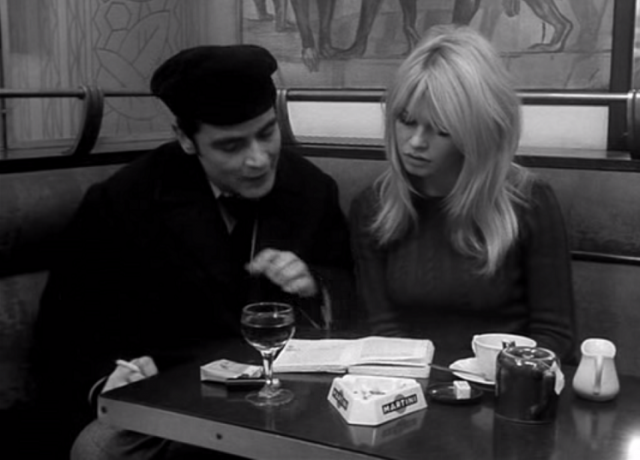

 Bernardo Bertolucci’s sexiopolitical look at Paris in the tumultuous year of 1968 focuses on three individuals: Matthew (Dawson Creek’s Michael Pitt), a shy American studying in France; Theo (French heartthrob Louis Garrel), a cigarette-smoking oh-so-French moody lad; and Isabelle (Penny Dreadful’s Eva Green), Theo’s “twin” who likes to walk around naked and flirt with both Matthew and Theo. The trio acts out scenes from films, plays dangerously erotic games, and drinks a lot of wine as the outside world comes crashing down around them. Green (Casino Royale, Kingdom of Heaven) is mesmerizing in her film debut, Pitt (Funny Games, Seven Psychopaths) reveals that he has few shortcomings, and the NC-17 rating is sure to attract an interesting crowd. And look out for a cameo appearance by Jean-Pierre Léaud playing himself. This is Bertolucci’s third film set in Paris, following
Bernardo Bertolucci’s sexiopolitical look at Paris in the tumultuous year of 1968 focuses on three individuals: Matthew (Dawson Creek’s Michael Pitt), a shy American studying in France; Theo (French heartthrob Louis Garrel), a cigarette-smoking oh-so-French moody lad; and Isabelle (Penny Dreadful’s Eva Green), Theo’s “twin” who likes to walk around naked and flirt with both Matthew and Theo. The trio acts out scenes from films, plays dangerously erotic games, and drinks a lot of wine as the outside world comes crashing down around them. Green (Casino Royale, Kingdom of Heaven) is mesmerizing in her film debut, Pitt (Funny Games, Seven Psychopaths) reveals that he has few shortcomings, and the NC-17 rating is sure to attract an interesting crowd. And look out for a cameo appearance by Jean-Pierre Léaud playing himself. This is Bertolucci’s third film set in Paris, following 